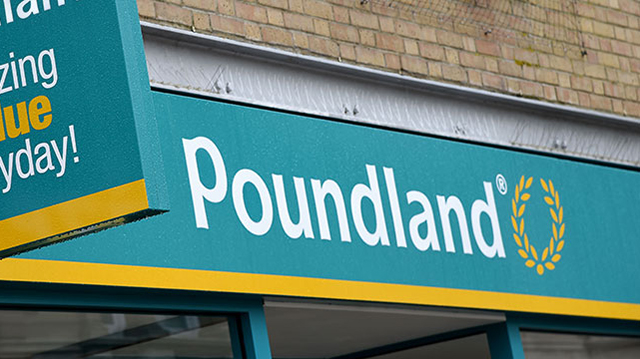A common standard for valuation accepted across the world would greatly enhance the global standing of the property profession. It may not be far off, reports John Edge
A major appraisal of different national standards is under way, with the aim of achieving worldwide recognition of a harmonised approach to valuation.
In June this year, the International Valuation Standards Committee, a global body representing professionals from 52 countries published its latest valuation guidelines as IVS 2000. It is now monitoring the key differences between its own guidelines and the main UK and US valuation standards: the RICS-published Red Book, and the Uniform Standards of Professional Appraisal Practice (USPAP), over which the US’s Appraisal Institute has a significant influence. Differences are likely to centre on issues of style and presentation.
IVS 2000 is now considered to offer the single standard that can harmonise the approach to valuation across borders. But before fully endorsing it, other valuation standards authorities, such as the RICS and the Appraisal Institute, want to ensure that there are no fundamental differences between it and their own rules.
It would be a huge step forward to establish a single, overarching common standard to which the torchbearers of both the Red Book and the USPAP – and, logically, Tegova’s European Valuation Standards as well – would agree to adhere. As well as promoting the cause of international standard setting, it would enhance the credibility of the property profession among the general public, clients of valuation services and regulators.
Achieving a universal standard would also help the recognition of property as a key component of the global financial infrastructure.
Establishing an identity
The IVSC is now going through the process of establishing a legal identity and reaffirming its copyright. It publishes its standards – as yet only in hard copy – and has also established a website.
A year ago, the IVSC took several steps to accelerate the work of upgrading the existing standards, including the appointment of a full-time executive director, Marianne Tissier, who took up her post on 1 January. It also reinforced its standards sub-committee, chaired by New Zealand’s John Dunckley, with additional members.
At the same time, the ISVC began the implementation of a three-year standards project, aimed at a complete overhaul and upgrading of the standards by 2002. It also put out a call for funds, to provide the sponsorship necessary for research, writing, and administrative costs.
Funding continues to be critical to the project. Major contributors to the initial pump-priming were the originators of two of the most advanced national standards already in existence: the RICS and the Appraisal Institute. Others included PricewaterhouseCoopers and Lend Lease.
Serious industry recognition came with the commitment over three years of $300,000 from 10 leading international and regional valuation practices, most operating on both sides of the Atlantic. This endorsement was a turning-point for the IVSC’s project, as it showed that international providers of valuation services wanted a single international standard and had identified the IVSC as providing the right vehicle to deliver it.
John Edge is head of valuation at Knight Frank, a member of the RICS appraisal and valuation standards board, and the UK representative on and vice-chairman of the IVSC. He represents the IVSC on the consultative group of the International Accounting Standards Committee. He also represents the IVSC at the United Nations conference on trade and development
The latest annual general meeting of the IVSC was held in London on 3 October, hosted by the RICS
|
IVSC objectives |
|
Set up in the early 1980s, the IVSC set out to: |
|
· formulate and publish, in the public interest, valuation standards for property valuation and to promote their worldwide acceptance; · harmonise standards among the world’s states and identify and make disclosure of differences as they occur. The development of its standards, the IVS, are, in turn, guided by three principal objectives: · to facilitate cross-border transactions and contribute to the viability of international property markets by promoting transparency in financial reporting as well as the reliability of valuations performed, for example, to secure loans and mortgages; · to serve as a professional benchmark, or beacon, for valuers around the world, so enabling them to respond to the demands of international property markets; · to provide standards of valuation and financial reporting that meet the needs of emerging and newly industrialised countries. |
|
IVSC standards structure |
|
A coherent international valuation standard would establish property as a key component of the global financial infrastucture |
|
The IVSC standards structure includes the following elements: |
|
Fundamentals This covers history, introduction, constitution, organisation and format, and general valuation concepts and principles. Code of conduct Included after much debate, this covers ethical and competency requirements. It is designed to ensure that valuation results are reliable, consistent and unbiased. Property types A distinction is made between real property, personal property, businesses and financial interests. In the UK, valuers are primarily concerned with real property – land and buildings. In the USA, there is a well-established and sophisticated expertise for the valuation of businesses of all types. Value types A clear and straightforward distinction is made between “market value” and “other than market value”. Standards Standards are established relating to the two value types. Applications International applications, referred to as IVAs, cover industry segments such as financial reporting and lending purposes. The IVA on financial reporting has been developed in close liaison with the International Accounting Standards Committee, which sets standards for much of the accounting profession – the exception being the USA, which has its own rules. However, as US accounting rules prevent upward revaluation for balance sheet purposes, a valuation standard to cover this need is irrelevant to the US valuer. The IVA on lending valuations is due for imminent overhaul and further development, in conjunction with banking regulators and other interested parties. Guidance notes Acting as an adjunct to the standards, the IVSC’s guidance notes are more transitory. They may be amended from time to time to provide additional guidance and will be of particular interest to practitioners, users of valuation services and the general public. In addition to those shown above, there are: Commentary The least permanent element of the standards, the commentary provides broad interpretations, interim advice and responses that are immediate and less formal. Glossary The cross-reference of definitions helps to harmonise differences in terminology between Commonwealth, North American and other English-speaking communities. |










